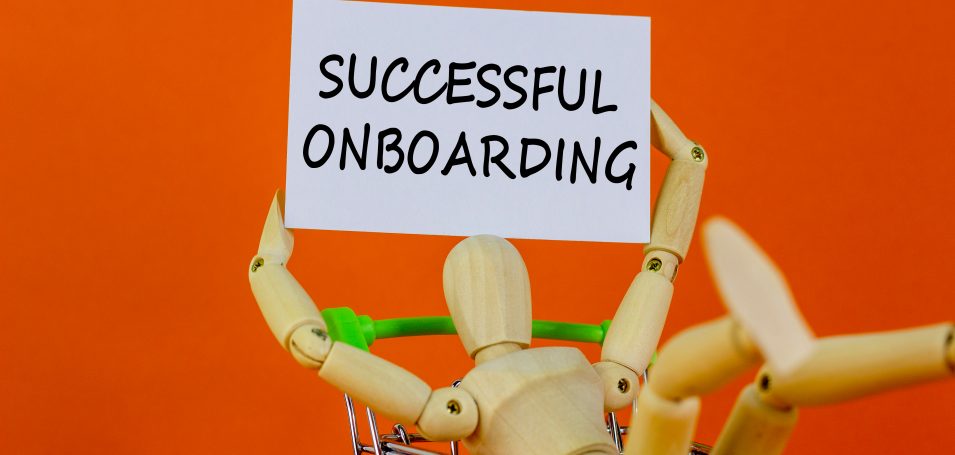In our 2021 State of Customer Education Report, we found that targeting retention and customer engagement training is becoming increasingly popular. When asked which metrics saw the greatest impact from customer education, 48% answered with product adoption, 37% of respondents indicated renewal rates, and another 31% showed that customer satisfaction scores were also a factor.
A great customer learning program is a competitive driver of an enhanced customer retention and engagement strategy – and with this in mind, there are several tactics that can help your program move the needle on these critical business metrics.
The built-in tools of modern customer learning management platforms, like Thought Industries, make it easier to boost customer engagement training by automating these 10 best practices that improve your customer retention strategy:
1. Surveys, quizzes, & assessments
Adding an assessment function to your learning program brings 3 major benefits:
- Critical feedback on the strengths and weaknesses of your courses from the learner’s perspective, enabling you to go back and optimize.
- Identified learning gaps that can be immediately addressed.
- An increased level of personalization – you’re better able to understand where each individual learner is and refine their individualized learning path.
Surveys, quizzes, and assessments are expected and essential to high-quality online courses. Each sends a message that “this is serious, and we mean business.” They also boost customer engagement training – naturally, because, if we know we’ll be tested at the end, we pay greater attention to the course.
Quizzes are quicker to execute, quicker to grade, quicker to return with feedback and less stressful than tests. They provide important value in their ability to promote learning and retention of knowledge throughout the online learning experience.
Assessments are most important in enhancing the efficiency of course structure. They not only provide insights into the levels of learner progress and satisfaction; they also act as a means for learners to share their experiences transparently. Assessments motivate learners to learn by asking them questions about the module they’ve just seen, which allows you to challenge them to prove their skills. You can assess their level of mastery in a certain field, and recommend where additional training is needed. Think of it as the “triple A method:” Ask, Assess, Advise. Check out this example training assessment to get started.
2. Blended learning
Many training companies that have relied on instructor-led training (ILT) find that they must now move quickly to virtual instructor-led training (vILT), as their first step into blended learning. The migration path is likely to be webinars, then videos, eLearning, and micro-learning. Whether you’re making the move toward blended learning as part of a larger digital transformation, or you’re trying to cater more to customers’ on-demand learning needs after running a largely in-person program, it’s a major step toward a highly successful customer engagement training.
This is an enormously important migration because:
- It’s likely that in our increasingly digital world we’ll see less travel, and more re-defined work responsibilities. Blended learning can satisfy the needs of both workers and companies, helping to make this new normal more successful in a shorter amount of time.
- There are new cohorts of workers that are more comfortable with online learning that can be accessed from anywhere, on any device, as needed.
- Online learning is more profitable long-term.
To be successful in a blended learning environment, you will need a modern learning management system (LMS) that helps boost customer engagement training with both content at their own pace and scheduled instructor-led courses.
3. Gamification
Gamification on a learning platform includes awards, badges, leaderboards, and pre-built games.
These can be dragged and dropped into courses to increase involvement in the learning process. They provide encouragement, rewards, and can make the learning process fun – which are all a powerful boost to your customer engagement training strategy.
Badging, when well-designed and well-executed, can also yield data that represents insights into your overall learning strategy; in particular, learner behavior. Using this functionality, you can easily see learners who have mastered certain workflows by tracking the badges they earn, which opens the door for your team to significantly improve.
And, most importantly, gamification leads to higher levels of success in training and an improvement in product adoption – an unmissable piece of your customer retention & engagement strategy.
4. Social learning
Social learning is the idea that learners are given the means to collaborate, network and learn from one another, rather than a traditional instructor-led program. You can create a better learning experience by creating organic engagement and driving interaction within a cohort or group of learners, which ultimately keeps learners in a social environment with a blend of engagement features, encouraging them to stay on-task.
Here are some ideas to kick off social learning with your program:
- Introduce communities or discussion boards to provide a space for interpersonal relationships, and encourage conversation and debate.
- Implement breakout sessions, which are an excellent way of connecting with other learners in the flow of a course.
- Consider pre-course materials and resources that will promote questions and discourse and save you time during a later-scheduled ILT event.
- Continue the conversation after the live event with post-event discussions or materials. This deepens awareness beyond a one-off experience into a journey with long-term benefits.
- Testimonials are a way for learners to share their positive experiences (social proof).
The long-term benefit to applying elements of social learning to your customer training program is to create evangelists, who will ultimately help promote your online courses and training programs to others. This means it’s not only a great tactic for your customer engagement training strategy, but for your pipeline as well.
5. Real-time communications
Real-time communications through email and learner notifications give you countless micro-opportunities to reinforce your message and encourage learners to pick up where they may have left off in their learning journey. Maintaining this thread of connection and in-the-moment messaging is a huge step to boost customer engagement.
There are 2 key elements to make this work:
- Most of your real-time communication needs to be automated. You can rely on a great customer learning platform that has pre-built learner notifications, reminders, and suggestions. In general, most users will ignore 50 to 75 percent of your communications, so it’ll take more than one communication for messages to have the reach you’re aiming for.
- The communications must be persuasive. You’ll need to both express the benefits of completing the course and consistently answer the question, “what’s in it for them.”
Using these notifications to move the needle on course completions isn’t for nothing – the more educated customers you have, the less likely they are to churn in the future. Taking every opportunity to keep your learners moving through your learning program is a step toward a stronger customer retention strategy.
6. Automatic course recommendations
Based on courses taken, achievements, and navigation history, automatic recommendations alert learners to discover new online training resources.
This approach enables you to better match their needs, goals, objectives and tastes. Just as learners are accustomed to with the media they consume outside of work, a great customer learning management platform needs to support functionality to serve personalized, exciting recommendations to answer the question, “what’s next?”
Automatic recommendations allow a training program to target their resources to the right learner, in the right place, at the right time. Adopting predictive learning as part of your program is an exciting step toward a more customized learning experience and stronger customer engagement through training.
7. Bookmarking, inline note taking, and in-course search
This category includes tools that provide your learners with easy reference, both to record notes on their own.
This is great for recording what’s most important to them, or for an assessment at the end of the course, for example, and finding the immediate answer to a question without leaving the platform is a great way to expand the scope of the learning you’re offering. These capabilities can speed internalization and help the learner to better understand – and engage with – the content.
This is a simple way to boost customer engagement simply by opening the door for more interactivity; with inline note taking, for example, the learner can add a note easily to any highlighted section. Then, with Thought Industries’ functionality, the note is indexed for learners to access at any time for review. Creating a personalized learning experience is a great way to keep your users engaged – but especially when they’re personalizing the experience for themselves.
8. Native course and content authoring
Ideally, your learning platform includes a built-in course and content authoring tool that gives your organization the ability to create short-form content that’s engaging to learners.
It should be easy enough for your subject matter experts to build valuable content that is also engaging – without being a time-consuming task.
Moreover, it should enable universal content updates, so that when content needs to be changed, it is changed in all versions at once. The more up-to-date your online training courses are, especially when it concerns technology, the more engaged your learners will be. The features on this list are certainly key steps toward an enhanced customer engagement & retention strategy, but we can’t overlook the importance of best-in-class content – and the platform you use should enable simple, effective content creation.
9. Curated learning paths
The learning path is a personalized roadmap to knowledge, achievement, advancement and sometimes certification.
It’s a journey that will require the learner to invest their time and energy. The path must be laid out in clear stages, with compelling logic as to why each online course in the series is needed, what is required of them, and most importantly, what knowledge, status and satisfaction will they get upon completion.
In many cases, you might want to help customers to join the learning path at the right stage for them. For example, you could start with a quick quiz; a handful of simple questions to measure their level of familiarity with the content. From there, curate a learning path (or choose from a set of pre-designed paths based on familiarity) and start your learner at the right place for their level of expertise.
This approach, while being a driver to boost customer engagement with your learning, also has the added benefit of providing valuable data on where your customers are starting from.
10. Certification & Credentialing
We know – certifications have the potential to be enormously expensive to build; however, when they work, they can truly build a tribe of enthusiasts for your online training.
The first thing to consider before launching a certification or credential program is that there are three different kinds of credentialing programs: certification, certificates of completion, and digital badges.
In a recent webinar with Debbie Smith, Senior Manager of Smartsheet University, she detailed the rise in popularity of credentialing as part of a larger customer engagement and retention strategy: “Certification can impact product adoption, recurring revenue, annual contract value, and active users. It also helps to create brand champions who really advocate for your product, enhancing the loyalty of your existing customers and helping with retention.”
It’s clear: the more weight your certification holds in your industry, the more it can do for your business – and the more motivation your learners will have to engage with your learning content.
The powerful learner engagement lever
As mentioned earlier, to successfully implement these 10 tactics and boost your customer engagement and retention strategy, you will need a modern platform that can:
- Create and follow learning paths and suggest next steps.
- Make it easy to dynamically develop and change content.
- Provide certification, credits, and other learner engagement tools, like gamification and badging.
- Make it simple for learners to find the right training they need, when and where they need it.
Individually, each of these tactics is a powerful learner engagement lever to increase product adoption and retain customers. Together, the whole greatly exceeds the sum of the parts.
In conclusion, the 10 learner engagement strategies that help improve customer retention include:
- Surveys, quizzes, and assessments
- Blended learning
- Gamification
- Social learning
- Real-time communications
- Automatic course recommendations
- Bookmarking, inline note taking and in-course search
- Native course and content authoring
- Curated learning paths
- Certification and credentialing
All of these learner engagement features you’ll find in the Thought Industries Platform. Schedule a demo to learn more.




